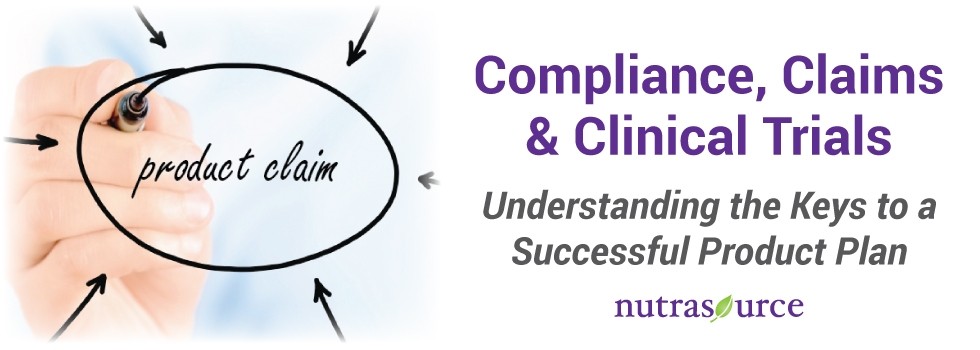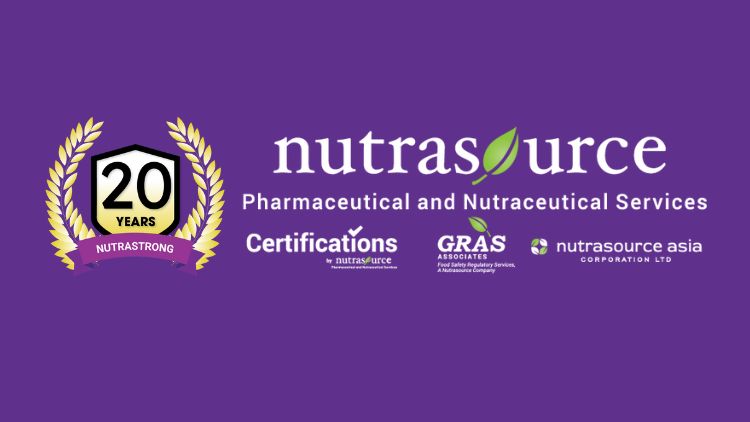Promotional Features
Compliance, Claims & Clinical Trials: The Keys to Product Success
There is more than one pathway to market for natural health and food products. Brands can achieve success through any route, but understanding the regulatory nuances of each, and developing a solid product plan in advance, is essential for staying on time, on budget and keeping consistent with your brand strategy.
Here we explore the benefits and drawbacks of the food, supplement and drug pathways to market, and discuss how to use compliance, claims and clinical trials to your advantage to achieve market success.
What Pathways Are Available for My Product?
If you are a manufacturer looking to launch a new product in the U.S. market, there are at least three different pathways to market available to you. These include the food, dietary supplement and drug routes.
The first and most important step to a successful product launch is understanding how your product will be classified and what claims you want to make. Only then can you choose the best option while considering budget, timelines and supporting evidence.
Some manufacturers position products in more than one category. If you are considering this option, the order in which you pursue pathways is critical. Undertaking the food pathway, followed by the dietary supplement route and finally the drug framework is typically the most cost-effective strategy to gain market access if you are considering all three avenues.
That said, if you wish to launch your product as a drug but are also considering the food or supplement avenues, it is crucial that it is first marketed in food or supplement form prior to filing it as a new drug. Failing to so could jeopardize development in food or supplement categories.
Compliance: Demonstrating Product Safety
Once you have established a clear path to market, the next step is gathering safety evidence. Safety is an important part of compliance. All products, regardless of how they are classified, must be adequately characterized and shown to be safe before marketing them. Pre-market review of safety may or may not be applicable depending on the category’s regulatory requirements.
There are several ways to demonstrate safety, and the requirements depend largely on whether your product will be marketed as a food, supplement or drug.
Foods
In the U.S., conventional foods, medical foods and dietary supplements all fall under the “food” umbrella as regulated by the Food and Drug Administration (FDA). One means of demonstrating food safety is Generally Recognized as Safe (GRAS) status. GRAS is based on demonstrated history of use and toxicological characteristics of an ingredient. (As of August 2016, the FDA has released final regulations for GRAS filings.)
If you have a new ingredient you wish to include in a food (conventional or medical) or supplement, pre-market approval by the FDA is required unless the ingredient is GRAS.
Conventional foods may only contain GRAS ingredients or approved food additives. When an ingredient being intentionally added to a food is not considered GRAS under conditions of its intended use, it is classified as a food additive. Food additives are also regulated by the FDA.
When working with a new ingredient, you first want to confirm whether it already has GRAS status or is an approved food additive and found in Section 21 of the Code of Federal Regulations (CFR). If it is neither GRAS nor an approved food additive, you may wish to submit a new GRAS notification. Independent consultants like GRAS Associates can help with this as the process is complex and requires an independent panel of experts.
Dietary Supplements
Ingredients added to supplements must be either GRAS or have “grandfathered” status – that is, used in supplements prior to the enactment of the Dietary Supplement Health and Education Act (DSHEA) of 1994. For ingredients that are neither GRAS nor grandfathered, a New Dietary Ingredient (NDI) Notification is likely required. NDI notifications serve as a pre-market review process by the FDA.
To market an NDI in a supplement, the substance must be considered to be a “dietary ingredient” as defined by DSHEA. The notification must include information showing that a supplement containing the NDI will reasonably be expected to be safe. (As of August 2016, the FDA has released new draft guidance for NDIs.)
The FDA does not approve NDIs for effectiveness but does review them for safety. Ultimately, it is the responsibility of the manufacturer to ensure the product is safe before it is marketed. This will avoid costly regulatory headaches, delayed product launches and lost sales.
Drugs
The safety approval process is very different for drugs compared to foods and supplements. Not surprisingly, drugs require thorough and specific animal and human evidence verifying the molecule’s safety and efficacy.
You may be wondering why natural health and food companies should be concerned about pharmaceuticals. Even if you do not think of your product as a drug, how you market it can automatically move it into the pharmaceutical regulatory territory.
New drugs are regulated through a New Drug Application (NDA) where sponsors formally propose to the FDA approval of their new drug for sale in the U.S. The NDA provides information on whether the drug is safe and effective and whether its benefits outweigh the risks.
Claims: Demonstrating Product Efficacy
In addition to safety, the efficacy of your product must also be substantiated. Claims are a key component of a successful product plan. Many companies use claims to communicate the health or nutritional attributes of products to the end consumer. Claims can also determine which category the product will fall into – food, supplement or drug.
Any claims being made about a product must be supported by adequate evidence that the statement is truthful and not misleading. Both the FDA and the Federal Trade Commission (FTC) conduct post-market monitoring of claims.
Teams should have a well-thought product development strategy in place that includes desired or intended claims. This will balance the needs of stakeholders and clarify future steps that need to be taken to satisfy regulatory requirements.
Foods and Dietary Supplements
There are three categories of claims for foods and supplements: health claims, nutrient content claims and structure/function claims.
Health claims indicate a relationship between a food substance (a food, food component or dietary supplement ingredient) and reduced risk of a disease or health-related condition. There are two types of health claims: authorized health claims, which use the Significant Scientific Agreement (SSA) standard and are made under the FDA Modernization Act (FDAMA), and qualified health claims. Less evidence is needed to support qualified than authorized health claims.
Nutrient content claims characterize the level of a nutrient in a food or supplement, such as “high,” “good source of,” and “free.” They can only be used for nutrients with established Daily Values.
Structure/function claims describe the role of a nutrient or ingredient in the normal structure or function of the human body, such as “supports cardiovascular health.” They are most commonly found on supplements. Manufacturers must notify the FDA to use these claims, and product labels must include a disclaimer statement that the product has not been evaluated by the FDA. Conventional foods may also use structure/function claims, though they do not require FDA notification or the disclaimer.
Download our dietary supplement claims substantiation e-book to learn more.
Drugs
Demonstrating pharmaceutical efficacy requires extremely specific, in-depth animal and human evidence. As mentioned, new drugs require an NDA filing to the FDA which includes this information.
Clinical Trials: Substantiating Claims with the Right Evidence
The third key to a successful product plan is one or more well-designed and well-executed clinical trials. Regardless of the product type, all claims must be truthful and not misleading. The gold standard for claims substantiation is clinical trials.
While the FDA has provided some industry guidance on the types of evidence required for claims support, there are few recommendations with on the number and specific type of trials required for supplements.
Ideally, sponsors should invest in at least one pilot study to provide key information necessary to progress to the second study: a randomized, placebo-controlled clinical trial (RCT). Based on the POM Wonderful vs. FTC case, at least one RCT with statistically significant results is necessary to validate dietary supplement claims.
When in doubt, manufacturers can use guidance from other authoritative bodies, such as the European Food Safety Authority (EFSA) and Health Canada, to understand the global regulatory and scientific consensus. This may also allow you to access one or more markets globally – and substantiate your claims in the process.




